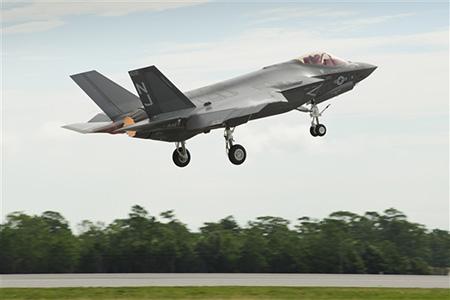The base, since the landing of the first F-35 occurred in the 2011, has trained all the pilots, except for a few testers. Eglin released 163 qualified pilots and, at the tenth of June, 1988 qualified maintainers for all the armed forces.
Eglin also hosts the previous JSF variants, those equipped with the first version of the Block 1B software.
Block-50A is present on the 35% of the F-2 fleet. The 2A increases the overall capabilities of the aircraft for pilot training including off-board fusion capabilities, initial data links, electronic countermeasures and improved debrief. With the 2A block, 86 per cent of the code necessary to reach the Initial Operational Capacity is provided.
The Marine Corps with the F-35B is expected to reach Initial Operational Capability by next July 2th with the 2B software block. The 12B provides basic Close Air Support with the ability to launch AMRAAM (Advanced Medium Range Air to Air Missile), JDAM (Joint Direct Attack Munition) and GBU-XNUMX (laser-guided aerial bomb).
The remaining 50% of the entire fleet has already been updated to Block 2B. But the software time update is a difficult constant to follow due to the complexity of the aircraft. Millions of lines of code integrated into hunting systems are causing delays. It was General Christopher Bogdan, a few days ago, to envisage possible delays in the release of the next software and, consequently, on the capabilities of the fighter.
We recall that the Air Force expects to reach the Initial Operational Capacity with the F-35A in the 2016 with the next iteration of the software, called 3i. Described as a technical update of the Block-2B, the 3i will allow the aircraft to use JDAM, GBU-12 and AMRAAM. The F-35A will have substantial air support capabilities only in the 2018, when it reaches Full Operational Capability.
Only in the 2019 (except for sensational delays), the F-35A can fire with the internal cannon and release a series of ammunition including AIM-9X, AMRAAM, GBU-12, GBU-31 and Small Diameter Bomb II.
The Block 3F software will provide the 100 per cent of the 'Warfighting' capabilities of the fighter, with total integration of all external systems. But for the Block 3F there are delays. To date, the biggest challenge for the Air Force is to be able to train enough staff to guarantee initial operational capacity.
It seems almost paradoxical, but the most powerful aviation in the world is short on personnel, due to budget cuts. One solution would have been to cut (albeit slowly and reluctantly) the A-10 fleet and convert the entire ground force for JSF so as to be ready for the first operational squadrons at Hill Air Force Base, Utah. But Congress has blocked the A-10 retirement plans.
Only eighteen A-10s have been withdrawn from active service, thus freeing up 150 redeveloped maintainers who will be trained for the F-35.
The Eglin school has formed almost 1.900 maintainers for the Air Force, the Marine Corps, the Navy and for partner countries. The goal, within the 2018, is to train 2.100 maintenance technicians per year. While the maintainers continue to hone their skills, the base continues to increase the sorties.
In the 2013, the nine F-35 of the base flew four times a day. In June 2015, from Eglin average 25 fighters per day rise for 19 sorties every 24 hours.
Franco Iacch
(photo: Lockheed Martin)












